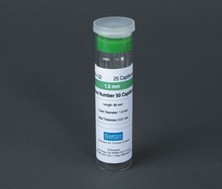Hampton AlumaSeal™ II Sealing Film and Applicator
Applications
Sealing film used to reseal HT format screen kits in polypropylene blocks and plates
Features
| Excellent seal |
| Film conforms to raised chimney wells |
| Easily pierceable with single or multichannel pipettors and robotic probes |
| Heat & cold resistant, recommended for temperatures from -80 °C to +120 °C |
| Certified DNase-, RNase-, and nucleic-acid-free |
| Less evaporation than clear films |
| Excellent barrier properties, virtually no reagent evaporation or drying |
A 38 µm soft non-permeable aluminum foil sealing film with strong medical-grade adhesive, AlumaSeal II sealing films eliminate the need for heat-sealing devices or mats during the resealing of reagents in polypropylene deep well blocks. Each sealing film measures 82.6 x 142.9 mm and offers sufficient sealing area for 96 deep well blocks. Length between the perforations with end tabs removed is 125.4 mm. Compared to other aluminum foils, AlumaSeal II has less tendency to roll back on itself when removing the backing paper and it conforms well to the plate during application.AlumaSeal II is a soft, pierceable adhesive film designed for the convenient and rapid sealing of polypropylene deep well blocks. A multiple split backing with two end tabs allows for easy, accurate positioning and secure sealing. The use of an adhesive sealing film minimizes evaporation and helps to prevent well-to-well cross contamination in reagent blocks. AlumaSeal II films are easily pierced by pipettte tips or robotic probes or piercing tools for direct reagent recovery without significant gumming by adhesive.


| CAT NO | NAME | DESCRIPTION |
| HR8-069 | AlumaSeal II Sealing Film | 100 pack |
| HR4-413 | Film Sealing Paddle | 5 pack |

 Membrane protein sparse matrix screens
Membrane protein sparse matrix screens